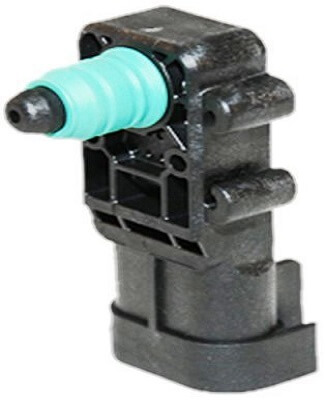Fuel vapors are routed by hoses to a charcoal canister for storage. Later, when the engine is running a purge control valve opens allowing intake vacuum to siphon the fuel vapors into the engine. Purge flow during non-commanded conditions. Fuel Level and Fuel Pressure sensor faults.
When the vent control valve opens, the fuel vapors from the fuel tank travel through a vent line to the charcoal canister. EVAP Purge and Vent Valve faults. The fuel vapors are then absorbed and stored by activated charcoal pellets in the charcoal canister.
Defective or damaged fuel cap. Distorted or damaged Fuel Tank Filler Neck. Split or damaged Carbon Canister.
This means that regardless of which make or model of vehicle, the code will mean the same thing (Sor not). That consists of the vapor lines from the fuel tank to the charcoal canister, the purge and vent valves, and the gas cap.
This is a fairly general code that just says there’s a malfunction in the system. In your vehicle, the evaporative emissions control system, usually just referred to as the “EVAP” system, keeps fuel vapors from escaping into the atmosphere. If you would like to save when purchasing Amsoil products, here is a link to set yourself up with an. Causes, Symptoms, Severity and Cost. Federal emission standards seeks to reduce the amount of gasoline vapor (hydrocarbons).
Typically, these are consistent and aren’t harmful to the engine or driving.
Evaporative Emission Control System. It’s when the vapors are being emitted at higher levels, quicker than normal, or in other unusual ways that you have an issue. This is important because fuel vapors contain a variety of hydrocarbons. When you drive and certain conditions (spee engine temperature, etc.) are met, fuel vapors are gradually purged from the charcoal canister and burned inside your engine.
The purge flow is controlled by the purge valve (purge solenoid). The evaporative emission control system is an environmentally friendly piece of auto technology. Its job is to contain fuel vapors in your vehicle and prevent them from escaping into the atmosphere and polluting it. Whenever there is any gas in the tank, your vehicle is emitting vapors. If other evaporative emission control system codes are present, diagnose and repair them as required Reset the codes and test-drive the vehicle.
If an evaporative emissions system leak code is present (and the fuel cap is good), visually inspect vacuum and fuel vapor hoses for cracks, splits, kinks, or breakage,.

The ECM decides whether there is an abnormality in the evaporative emission control system based on the vapor pressure sensor signal. Easiest way without a compatible scan tool is by removing them and blow air through one side port. If air passes from one ened to another that means component is stuck open.
The (EVAP) emission control system prevents the escape of fuel vapors from a vehicle’s fuel system. When your engine light comes on because of a weakness or failure in this system, you most likely won’t notice the car driving any differently. Everything will seem fine, except for the glowing check engine light on the dashboard.
When the purge flow is determined to be faulty, a Check Engine Light is set and illuminated on the dashboard. The control module tests the evaporative emission (EVAP) system for a large leak. The engine control unit sets the value of the intake vacuum flow for the evaporative emission system. The charcoal in the canister is what stores the fuel vapors from the gas tank.
In normal circumstances, the intake vacuum will cause air to flow to the charcoal canister. Answered by a verified Dodge Mechanic We use cookies to give you the best possible experience on our website. The fuel vapor is routed through a vacuum line to the engine’s intake, while the purge valve or solenoid meters the anticipated level of fuel vapors. Its pretty easy to tell if your filler neck is rusted out, just crawl under and take a look. I had a hole in one about the size of half dollar.
The problem is due to an inoperative Canister Closed Valve Vacuum Switching Valve (CCV VSV). The CCV assembly process has been changed to correct this condition. You can buy a newer style genuine Toyota CCV valve. If you still have codes, check further for a cracked or leaking charcoal canister.
There is a diag chart in the knowledge base. Its really nothing to worry about. When you have the on a lift look at the emissions hoses for splits or cuts. Small leaks are difficult to find so you might not see anything.
The ECM controls a duty−cycle type VSV (vacuum switching valve) to purge the evaporative emissions from the charcoal canister. The vapor pressure sensor and VSV for vapor pressure sensor are used to detect abnormalities in the evap- orative emission control system. What are codes po444and 446. Remove and reinstall the gas cap, clear the code, and drive for a day and see if the codes come back.
Both of these faults effects the emissions of your vehicle. This condition can be more of a fault with the purge control circuit. The fuel tank filler hose area has a small leak or the fuel cap.
Fuel tank vapors are allowed to move from the fuel tank due to pressure in the tank, through a vapor pipe into a canister 2. Then can be as simple as a loose gas cap, and can be a vacuum line leak at the tank.
No comments:
Post a Comment
Note: only a member of this blog may post a comment.